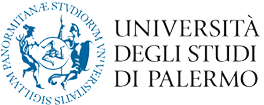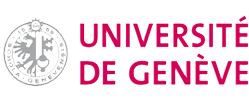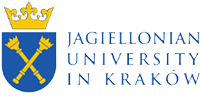The Legal Order and the Practice of Trial in the Middle Ages (Bologna and Italy, 12th-13th Centuries)
This chapter examines the judicial order and the practice of trials in medieval Italy (12th-13th centuries). Vallerani explores how procedural norms structured the judicial process and how legal actors—from judges to litigants—interacted within this system. The study highlights the tension between legal abstraction and procedural reality, showing how medieval justice was shaped by both theoretical frameworks and practical constraints.
Le procès et la renaissance de l’ordo au XIIe siècle (Trials and the Revival of Ordo in the 12th Century)
The concept of ordo, or procedural order, was central to medieval justice. It allowed courts to create a parallel legal reality, distinct from the everyday world, where disputes were reframed in abstract legal terms. This process of abstraction, inherited from Roman law, helped structure legal reasoning and ensured procedural consistency.
By the mid-12th century, jurists began developing procedural manuals, known as Ordines iudiciarii, which outlined the correct way to present legal claims. These texts introduced standardized formulas, ensuring that litigants articulated their grievances in legally recognizable terms. The adoption of actiones (legal actions) played a key role in this transformation, as they allowed a single fact to be framed in multiple ways, depending on the legal strategy chosen.
La procédure des ordines (The Procedure of the Ordines)
The ordines structured trials in a logical and procedural sequence, ensuring that legal disputes followed a standardized format. This order was based on:
- An accusatorial model, where the plaintiff initiated the case.
- A process of decomposition and recomposition, where facts were broken down into legal arguments and then reassembled into a judgment.
The trial unfolded in three key stages:
- The initial accusation, where the complaint was legally formulated.
- The positiones, a structured exchange where both parties responded to specific claims.
- The intentiones, where disputed facts were examined through witness testimony and legal argumentation.
These steps ensured that trials were not merely fact-finding exercises but structured dialectical processes, where legal reasoning played a central role.
La procédure accusatoire dans les tribunaux communaux (The Accusatorial Procedure in Communal Courts)
By the 13th century, communal courts had fully embraced the accusatorial system, in which private individuals brought charges against one another. This system relied heavily on written records, with each procedural step documented in notarial acts.
- The growth of judicial bureaucracy led to the mass production of legal documents.
- Court proceedings followed predefined formulas, ensuring procedural consistency.
- Written pleadings replaced oral confrontations, reinforcing the importance of legal professionals.
The rise of municipal justice coincided with the development of urban legal culture, where courts became central institutions for resolving disputes.
Les procédures ex officio du concile de Latran IV au temps d’Alberto da Gandino (The Ex Officio Procedures from the Fourth Lateran Council to Alberto da Gandino)
While accusatorial justice remained dominant, the 13th century saw the rise of inquisitorial procedures, particularly for cases involving public order.
- The Fourth Lateran Council (1215) introduced the concept of fama (public reputation) as a basis for prosecution.
- Judges gained the power to initiate investigations ex officio, without a formal accusation.
- The Tractatus de Maleficiis by Alberto da Gandino codified these procedures, reinforcing the judge’s role in maintaining public order.
This shift expanded judicial authority, allowing magistrates to prosecute crimes without waiting for a private complaint.
L’inquisition ex officio dans les tribunaux municipaux (The Ex Officio Inquisition in Municipal Courts)
Urban courts adopted inquisitorial procedures to handle serious offenses. Unlike accusatorial trials, these cases:
- Were initiated by magistrates, rather than private individuals.
- Relied on public notoriety (fama) as evidence.
- Allowed judges to interrogate suspects and gather evidence proactively.
While this system increased efficiency, it also blurred the line between judge and accuser, raising concerns about judicial impartiality.
Les juristes et le procès : quaestiones et consilia (Jurists and Trials: Quaestiones and Consilia)
Legal scholars played a crucial role in shaping medieval litigation.
- Quaestiones were hypothetical legal questions, debated in universities and courts.
- Consilia were legal opinions, issued by experts to assist judges and litigants.
These texts bridged the gap between theory and practice, ensuring that judicial decisions were grounded in learned legal reasoning.
La circularité du savoir juridique : des quaestiones aux consilia (The Circularity of Legal Knowledge: From Quaestiones to Consilia)
The relationship between academic law and judicial practice was highly dynamic.
- Many jurists worked as both scholars and legal consultants.
- Court cases generated new legal debates, which in turn influenced judicial decisions.
- Legal interpretation became a collaborative process, with judges, scholars, and practitioners contributing to the evolution of law.
This circular exchange of knowledge helped standardize legal procedures, while also allowing flexibility in responding to new challenges.
Pour faire le point (Key Questions for Reflection)
The chapter concludes with four fundamental questions, inviting readers to reflect on the nature of medieval judicial procedure:
- What was the accusatorial procedure?
- What was the inquisitorial procedure?
- What was the function of quaestiones?
- What was the function of consilia?
By addressing these questions, the author encourages a deeper understanding of how medieval legal systems operated, highlighting their complexity and adaptability.
Conclusion
Vallerani’s study reveals that medieval trials were not static events, but highly structured legal performances, where procedure played a central role in shaping justice. The evolution of judicial forms—from accusatorial trials to inquisitorial investigations—demonstrates the increasing formalization of law, while also reflecting the social and political transformations of medieval urban life.







